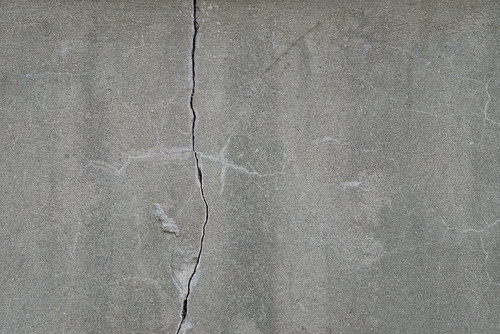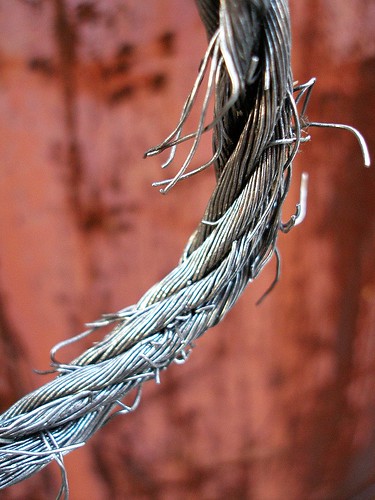Mathieu Leocmach researcher in soft condensed matter physics shows what is research on a day-to-day basis
Thursday, October 9, 2014
EnDirectDuLabo = RealScientists.fr
Somehow this is the same ideal I intended for this blog. However Twitter format makes it easier. In 140 characters you can't explain your research deep enough to bother your reader. You have to be clear with your idears, one at the time. Punchlines and soundbites.
If you read French, here is the storify of my week:
Thursday, August 21, 2014
Fracture in yogurt: publication process and press releases
On the research blog Meta Rabbit, publication process is described as a race when the distance to run is decided randomly partway through the race. Here is a typical example :
- January 31st
- Concluding more than a year of research, we submitted a paper to Physical Review Letters. Hopefully, the editor finds it interesting enough to send it to 2 referees (other anonymous researchers knowledgeable about our area of research).
- April 1st
- Answer of the referees. One is positive about our paper but the second one has some doubts and questions. We spend the next 3 weeks doing complementary experiments to answer those concerns.
- April 23rd
- We send our answer. It is processed by the editor and sent back to the referees
- June 2nd
- The referees answered again. We satisfied #2, but #1 is no more satisfied. Indeed, we did not answered him properly the first round, we were overconfident because he displayed a positive opinion.
- June 7th
- We send back a detailed response (11 pages when the paper is 4 pages). We must not overlook any detail now.
- June 16th
- We receive a mail from the editor: our paper is accepted!
In the next few weeks, the editorial team will format the paper, we will review and correct the proofs and finally the paper is published the 8th of July. But this is not the end: we have to advertise our paper. First, we contact the physics institute in CNRS (French National Centre for Scientific Research). Will they make a press release? A press release is important for advertising scientific results to the general public. Academic paper writing in the art of making boring rigorous something you are excited about. Press release in the reverse process. We describe our research with the less jargon possible to the scientific journalist in CNRS, he uses his writing skills to make it more appealing, we fix some factual mistakes (sexy does not mean wrong) ... and here we are, we have a press release (in French).
And then, we were lucky. One of us tweets his join to the acceptance, and a Philip Ball, a science journalist columnist at Nature Materials, gets it.
What's not to like? RT Our manuscript on failure of #yogurt under stress has been accepted for publication in #PRL @APSphysics @univbordeaux
— Philip Ball (@philipcball) 17 Juin 2014The tweet is a bit irreverent, but well, we are dealing with yoghurt, we have to get over it. And Philip Ball contacts us because he wants to write about our paper! So, again, back and forth for factual corrections and at the end he writes a beautiful column about our paper. Go read it, it's yummy.
Thursday, May 15, 2014
Strange patterns
For more than a year, I am trying to understand that
Or more dynamically, this
This is no leopard or fish skin pattern, nor salad dressing-like demixing. It appears when I make a yogurt in a very thin container, actually in a gap of a tenth of a millimetre thick, between two glass plates. Important detail: the glass is made extremely slippery, nothing appears with usually sticky glass.
The pattern is random but there is a well defined size. I can change the thickness of the cell (from 50 microns to one millimetre) and the pattern will scale up accordingly.
By the way, there is nothing living in my yogurt, no bacteria. The gelation is induced by slow and homogeneous acidification by chemicals. You can see the process of gel formation at high magnification in the video below. At first, things move around, this is Brownian motion. Then the gel forms and everything stops. Then the pattern appears.
It took me a couple of month to understand what these patterns are. I let you guess until next time.
Sunday, April 27, 2014
Testing rupture models
How do materials break ? This question is the starting point of my present post-doc in France. People have good ideas on how metals and crystals break, because their structures are known for a century or two. But when you turn your attention to more messy materials, like composites, concrete, paper, gels, etc. the answers are far less convincing.
Popular (because simple) models of fractures are called fibre bundle models
. Imagine a cotton yarn, or a rope made of many interlocked fibres. If you pull on it hard enough and for long enough, a fibre will break. The pulling strength will be shared by all the other fibres, until an other one breaks. The more broken fibres, the less remaining fibres, the more often a new fibre breaks. Sounds like a random action movie scene, isn't it?
A first simple model is to consider that the fibres are independent from each other and each of them has a slightly different breaking threshold. The only way fibres interact with each other is by sharing evenly the load. This model is good at describing how paper breaks. It predicts that over a given load threshold, the material will always break. The stronger you pull, the faster it breaks, conversely if you pull just a minute amount above the threshold it will take a very long time to break. For most of the process, you may even not notice that you are damaging your rope. That's why in the movies it's always when the last guy crossing the rope bridge who falls.
A mode refined version of the model says that when a fibre breaks, the load it bear is split among its neighbouring fibres. It makes sense when you consider an actual rope, made of smaller twines, made of even smaller threads, etc. until you get to the individual fibres. What this new model predicts is the absence of threshold load. If you pull on your material long enough, it will break, whatever your strength. Of course, the weaker you are, the longer you'll have to wait. An other interesting prediction is the appearance of fractures, or regions where all the fibres are broken. Can this explain the fractures and cracks observed in many materials? That's on this question that I started my own research.
I selected a system that indeed looks like a network of fibres:
Unstirred yoghurt do behave very much like a hard solid, except that it is much weaker. You don't need a powerful machine to fracture it, a spoon is enough.
And once it is broken, the cracks won't heal. It is very different from a liquid or from pastes that you can stir to erase the memory of the system. If you stir a yoghurt you just destroy it further.
Now, I don't trust myself to apply a constant force with a spoon, especially if the experiment is set to run for a week. So I make my yoghurt between two concentric cylinders of a machine called a rheometer, which is able to rotate the inner cylinder with a constant force until the next power cut. Step by step: I pour the protein solution in the rheometer at rest, the gel forms during 17 hours as the solution acidifies, and only then I apply the force.
As you see on the picture above, after some time fractures appear in the yoghurt and grow vertically. By the way, the picture was taken by a standard webcam. This is not rocket science. The picture above shows only the bottom half of the yoghurt, there are fracture also growing from the top. When bottom and top fracture meet, the gel breaks completely.
I repeated this experiment many times, varying the applied load and thus the time needed to break the yoghurt completely. At high load, I am limited by the recording frequency of the rheometer, so my minimal breaking time is slightly less that a second. On low load, patience is the limiting factor, as well as evaporation and mold growth. Still I have an experiment that lasted 11 days. That is a factor 10 million between the longest and shortest experiments, enough to prove that there is no meaningful load threshold. That is a first win for the model.
Edit March 29th, 2014
A video of the rupture. Nothing seems to append and then ...







